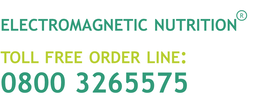The health properties of the various red, blue and purple berries have been understood for many years. Including the fact that these foodstuffs are rich in antioxidants and offer an important immune health boost.
However, there is a growing appreciation that berries containing a high source of anthocyanosides (blue/red pigments) can combat some eye conditions. Including fatigue and dry eye caused by too much ‘screen time’ or certain health conditions.
Could berries be a solution to fighting eye irritation and vision impairments too? This has been the 'focus' of some fascinating nutritional research into bilberry extract. Research that we want to explore with you here.
Especially as the UK has two million blind and partially sighted people, and countless others with serious eye conditions that impact their quality of life. It is estimated that by 2050, the UK sight loss figure will double to four million.
Berry good for you
The possibility that eating more berries - and supplements containing bilberry extract - could improve eye health is due to the natural colour of these botanic foodstuffs.
The pigments that create red, purple, and blue in fruits and vegetables are called anthocyanins. They are a bioactive component that has already proved crucial to both nutraceutical and traditional medicine fields.
Research has shown that anthocyanins have “antidiabetic, anti-inflammatory, antimicrobial, and anti-obesity effects” and can also play a role in the prevention of cardiovascular diseases (CVDs).
Anthocyanin-rich berries are also known to contribute to optical acuity, especially night vision. This has been proven in a number of clinical trials. This includes one study in which bilberry extract was used to improve visual function within patients with normal-tension glaucoma.
This all reinforces a growing appreciation of the nutritional benefits of bilberries (sometimes referred to as European blueberries) in particular. They are a highly beneficial dietary component, as they are low in calories but high in fibre, manganese, and vitamins C and K.
Research into dry eye conditions
Building on the growing belief that bilberry extract can improve visual health, there has been substantial interest in extracting the anthocyanins they contain and using them in more medical interventions for common eye problems.
Dry eye disease (DED) is often associated with ageing. However, as reliance on technology grows, so does the potential for younger people to suffer from eye strain, dryness and soreness.
This is not simply an issue of experiencing discomfort and inflammation. DED can potentially cause both temporary and long-term visual disturbances due to damage to the eye’s surface.
However, one solution to DED could be a natural, standardised form of bilberry extract. This has been proven to help increase the production of tears, the body’s own eye health defence mechanism.
study published in the European Review for Medical and Pharmacological Sciences concluded that when you consume natural bilberry extract, it contains: “a natural more bioavailable delivery form anthocyanins” and it can “improve tear secretion and plasmatic antioxidant potential in subjects suffering from DED symptoms.”
What does that mean?
Firstly, selective forms of bilberry extract “could be more effective in subjects with higher tendency of dry eye". Plus, the study showed that this excellent source of anthocyanins could potentially counterbalance oxidant stress in eyes, with its important antioxidant elements.
Why bilberry extract?
Within this and other studies, the bioavailability of active anthocyanin compounds in bilberries has been highly significant. In other words, natural bilberry extract is proving to be more potent and beneficial than artificially created anthocyanin compounds.
To prove this, the study referenced above used both within trials, to see which worked best. The conclusion was: “anthocyanins are four times more available when orally administrated in rat as natural bilberry extract,” when compared to an “enriched fraction”.
There is a growing consensus that this difference – present in human and animal studies – is due to the interaction between anthocyanin bioavailability and the non-anthocyanin compounds that bilberries contain. Including the fruit’s vitamins, fructose, tannin and pectin.
Next step
Research into the health benefits of bilberries continues, as part of exciting global interest in the power that botanic compounds hold to tackle widespread health issues.
Keep checking back with us for more news and research overviews.










